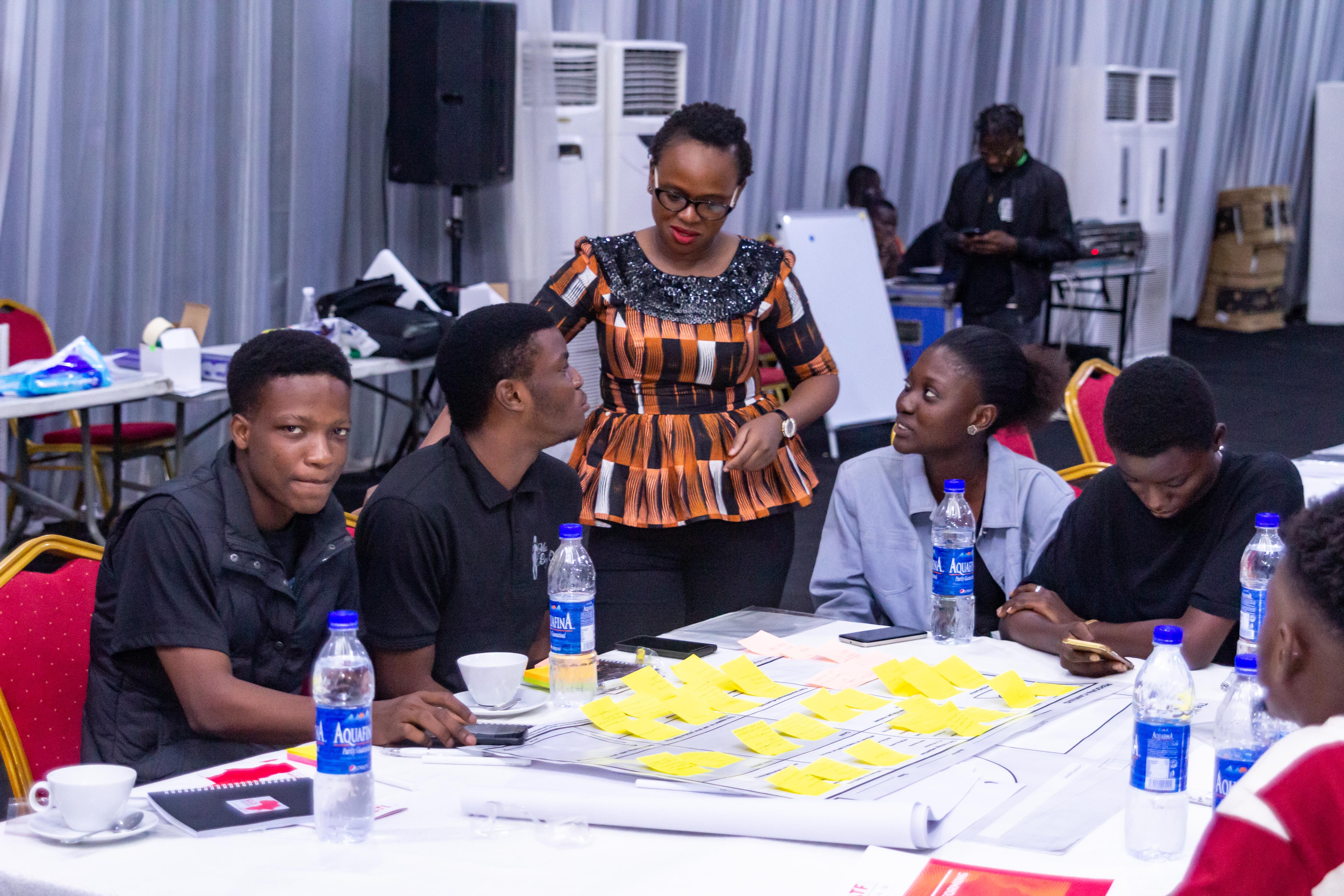Our Views
Creative Industries in Developing Economies: Catalysts for Jobs, Exports, and PPPs
The creative industries – encompassing film, music, fashion, design, crafts, digital content, gaming, architecture and more – are emerging as powerful engines of growth in developing economies. Across Africa and other regions, these cultural and creative sectors are not only preserving heritage and shaping national identities, but also creating jobs, boosting exports, and attracting investment. In fact, the global creative economy is now a $2 trillion industry supporting 50 million jobs worldwide, with about half of those jobs held by women and more youth employed than in any other sector. In countries where creative industries are most developed, they contribute an estimated 2–7% of GDP, and global trends suggest the sector could account for 10% of world GDP by 2030. However, Africa’s share of this burgeoning market remains disproportionately small – a gap that signals immense untapped potential. Strengthening and formalizing creative and cultural sectors can unlock new pathways for economic development. In this article, we explore how investing in creative industries can drive job creation, export growth, and innovative public-private partnerships (PPPs) in Africa’s developing economies, drawing on Aninver’s experience in projects like Fashionomics, the Netflix-AfDB partnership, and creative economy initiatives in Rwanda and Sierra Leone (see more about experience in Creative Industries in this link: https://aninver.com/areas_expertise/creative-industries).
- Creative Industries: A Catalyst for Jobs and Inclusive Growth
One of the most compelling reasons for governments to support the creative economy is its capacity to generate employment, especially for youth and women. Creative work is often labor-intensive, decentralized, and entrepreneurial – making it accessible to small businesses and freelancers. According to UNESCO, Africa’s film and audiovisual sector alone currently employs around 5 million people and contributes $5 billion to GDP across the continent. This is just one segment of the broader creative economy, which also includes music, fashion, crafts, publishing, digital media, and more. Taken together, the creative industries form a “powerhouse for Africa’s economic development,” with estimates that the sector could create over 20 million jobs and generate $20 billion in annual revenues in Africa under the right conditions. These jobs often engage the talents of young people and women at a higher rate than traditional industries, helping to address demographic challenges and gender gaps in employment.
Local examples abound: Nigeria’s famed film industry, Nollywood, produces about 2,500 films per year and has annual revenues exceeding $1 billion, making it a major contributor to Nigeria’s GDP and a source of livelihood for hundreds of thousands (from actors and directors to editors and vendors). In the music scene, African genres like Afrobeats and Amapiano have captured global audiences, translating into recording studios, event producers, and digital content creators finding new job opportunities. Similarly, Africa’s fashion industry – valued at over $31 billion – is providing employment to millions of artisans, designers, and retail entrepreneurs across the continent. Even sectors like gaming and digital content creation are emerging employers, as African youth leverage social media and technology to produce comics, animations, and apps. Each of these creative fields has a multiplier effect in the economy: when a local artist succeeds, they create income for managers, marketers, distributors, and countless others in the value chain. Globally, it’s estimated that every $1 spent in the creative industries generates $2.5 in economic output – a reflection of the broad linkages from creative work to other sectors (manufacturing of merchandise, tourism, telecommunications, etc.).
Importantly, creative industries offer inclusive growth that can reach communities often left behind. By nature, cultural businesses tend to start small – a craft workshop, a recording studio, a design startup – requiring relatively modest capital but lots of human creativity. This lowers barriers to entry for micro-, small- and medium-sized enterprises (MSMEs) and entrepreneurs, including those in the informal sector. Our team at Aninver has seen firsthand how creative enterprise programs can empower marginalized groups. For example, the African Development Bank’s Fashionomics Africa initiative – which Aninver helped design – aims to enable African textile and apparel entrepreneurs (especially women and youth) to create and grow their businesses by improving market access, financing, mentoring, and skills. By supporting thousands of small fashion entrepreneurs to formalize and scale up, such platforms not only create jobs in tailoring, modeling, marketing, and e-commerce, but also foster a new generation of business owners in the creative space. As part of the Fashionomics program, we identified ways to connect designers with commercial banks, investors, and even alternative financing channels like crowdfunding – illustrating how targeted interventions can unlock entrepreneurship and employment in creative sectors.
It’s also worth noting the social impact of these jobs. Creative industry occupations celebrate cultural heritage and identity (think of artisans preserving traditional crafts or filmmakers telling local stories) – thus the jobs created are not only about income, but also about cultural pride and community engagement. In post-conflict or developing contexts, investing in arts and culture can engage youth in positive outlets and foster social cohesion. Our recent work on a Creative Economy Diagnostic in Sierra Leone underscored this point: the study highlighted the creative economy as a key avenue for economic diversification, youth employment, and cultural preservation in a country with a fast-growing young population. By mapping Sierra Leone’s music, film, gaming, and design industries, we provided recommendations to help entrepreneurs turn creative passion into viable businesses, thereby tackling high youth unemployment with home-grown opportunities. The message is clear – supporting creative industries means investing in people and their ideas, which can yield inclusive growth far beyond what traditional sectors alone can achieve.

2. Tapping Export Potential and Global Markets
In addition to domestic jobs, creative industries hold tremendous export potential for developing economies. Unlike many traditional commodities, creative products and services can often reach international markets with lower transportation costs (digital distribution) and can command a premium for their uniqueness. When a film from Kigali streams on Netflix, or a fashion label from Lagos sells in London, or a mobile game developed in Nairobi is downloaded worldwide, those are exports of creative content earning revenue and recognition abroad. The global demand for diverse cultural content is surging, and African creatives are increasingly riding this wave.
Africa’s cultural output is becoming a hot export: Nollywood films and series are now enjoyed by diasporas and global audiences on platforms like Netflix and Amazon Prime, generating export revenue and licensing deals. Nigerian music stars (Burna Boy, Wizkid, Tems and others) are topping international charts and performing on global stages, while genres from Afrobeats to Amapiano have become international sensations. An African fashion designer in Dakar or Johannesburg can now sell designs to a customer in New York via online marketplaces. Handicrafts and contemporary art from Africa are prized in galleries and fair-trade stores around the world. In short, African culture is increasingly recognized as an exportable asset class of significant scale, attracting attention from major global players. Industry giants like Netflix, Universal Music Group and others have been expanding operations in Africa, not only to sell their products, but to source local content and talent that can succeed globally. This trend brings investment and know-how into local industries, creating a virtuous cycle where quality and capacity improve, enabling even greater exports.
From a numbers perspective, the global trade in creative goods and services is booming. In 2022, exports of creative services (such as IT, software, design, media production) reached $1.4 trillion, up 29% from 2017. Exports of creative goods (like crafts, fashion, books, art pieces) hit $713 billion in 2022, a 19% increaseunctad.org. Developing countries are increasingly contributing to this trade. Historically, advanced economies dominated exports of things like films, TV formats, and advertising services, but developing nations doubled their share of creative service exports from 10% in 2010 to 20% in 2022. This indicates a growing capability in emerging markets to produce content and services for global consumption. However, much of Africa’s creative output is still untapped or under-commercialized on the global stage. For instance, despite Nigeria’s prolific film output, the continent remains vastly underserved in terms of cinema infrastructure (only 1 screen per 787,000 people in Africa, versus ~1 per 50,000 in Europe). This limits theatrical revenues and means African filmmakers rely heavily on digital distribution and festivals abroad to reach audiences. Similarly, issues like piracy and weak intellectual property enforcement often undercut the earnings of creators – the UNESCO report estimates that 50–75% of potential revenue is lost to piracy in African film markets. Addressing these challenges through better policies and enforcement is key to turning creative work into sustainable export earnings.
There are encouraging examples of cross-border success that point the way forward. The rise of streaming has enabled niche content to find global fans: for example, a Nigerian series can trend internationally on Netflix, or a South African game developer can publish on app stores worldwide. Cultural diasporas also play a role in amplifying exports – the African diaspora abroad often acts as early adopters and ambassadors for African music, films, fashion and art, helping push these products into mainstream markets. We see creative entrepreneurs increasingly collaborating across borders: pan-African co-productions in film (as encouraged by initiatives from multilateral banks and UNESCO), African fashion designers partnering with European brands, or African game developers contracting for international studios. Each success builds the brand of African creativity and opens doors for others. As investor Ibrahim Sagna noted, “African culture is finally recognized as an exportable asset of critical scale” with sectors like entertainment expected to grow around 15% annually in coming years. Indeed, PwC projects Africa’s entertainment and media market will reach $4.6 billion by 2025 at that growth rate – a sign that both local consumption and export revenue are accelerating.
At Aninver, we have been at the forefront of analyses that help realize this export potential. In partnership with Netflix, our team mapped out a roadmap for collaboration between Netflix and the African Development Bank (AfDB) to catalyze growth in Africa’s film and TV industries. We identified how increased investment in local productions, training for filmmakers, and improved distribution channels can allow African storytelling to reach a wider global audience. Global streaming platforms partnering with development institutions is a novel approach – essentially a public-private collaboration – to nurture local creative ecosystems so that more exportable content is produced. Our work with Netflix and AfDB highlighted that with rising demand for African stories worldwide, strategic support (from financing to skills development) can help African media companies scale up and export more content, capturing greater value from the global creative economy. Likewise, our Fashionomics Africa feasibility study not only targeted job creation, but also envisioned an online marketplace where African fashion MSMEs could sell internationally, tapping into e-commerce to export clothing and accessories beyond their borders. By improving market intelligence and digital sales channels, fashion entrepreneurs can reach the vast African diaspora and global consumers who seek authentic African designs – turning local creativity into foreign exchange earnings.
In summary, export potential is a key promise of the creative economy. With the right support, creative businesses in developing countries can compete on quality and originality, and the global market is eager for fresh content. Nurturing these sectors means new sources of export revenues, diversification away from commodities, and a stronger economic brand for countries (enhancing soft power as nations become known for their cultural products). The next step is ensuring the investments and partnerships are in place to realize this potential – which is where innovative financing and PPPs come in.

3. Public-Private Partnerships: Investing in Creativity
While the opportunities are immense, developing a thriving creative industry requires strategic investment and collaboration. Many creative sectors face challenges such as limited infrastructure (e.g., studios, theaters, broadband), scarce financing (banks often shy away from creative businesses), and skills gaps (need for specialized training in film production, game development, fashion merchandising, etc.). Public-Private Partnerships (PPPs) and other innovative partnerships can play a pivotal role in overcoming these barriers by leveraging the strengths of both government and the private sector.
Infrastructure for creativity is one area ripe for PPP solutions. Just as PPPs have long been used to build roads and power plants, they can be adapted to cultural infrastructure. For example, developing a network of creative hubs, film studios, performing arts centers, or multimedia incubators often exceeds public budgets alone, but through PPP models, governments can provide support (land, co-funding, policy incentives) while private investors bring capital and expertise in facility management. In Nigeria, a notable case is the renovation of the National Theatre in Lagos through a partnership that brings in private investment to transform it into a modern creative industries hub. Similar initiatives could be implemented across Africa – imagine film studio complexes, music recording villages, or design and tech incubation centers developed jointly by public agencies and private firms. These not only provide physical space and equipment for creators, but also signal serious commitment to the sector, attracting further investment and training opportunities.
Our experience in Rwanda’s creative industry program design is illustrative of how PPP thinking can be embedded in creative economy development. Aninver conducted a feasibility study and detailed program design for the Rwanda Creative Economy Programme, and one of the key pillars was Infrastructure development through PPPs. We mapped existing creative hubs and spaces in Rwanda and identified gaps where new facilities or upgrades were needed. The program recommended exploring public-private partnerships to develop creative spaces – for instance, converting underutilized public buildings into artist co-working hubs or partnering with telecom companies to build innovation labs for digital content creators. By involving private partners, Rwanda can tap into additional financing and operational know-how, while ensuring these creative spaces are sustainable and aligned with industry needs. Our study also suggested co-financing models for private sector-led infrastructure (such as matching grants or land provision) to encourage investment in film studios, theaters, and cultural centers. This way, the government doesn’t have to foot the full bill up front; instead, it can catalyze private investment and share risks/rewards, exactly what PPPs excel at.
Financing creative enterprises is another domain for partnership innovation. Traditional lenders often view creative businesses as high-risk due to intangible assets and unpredictable revenues. To bridge this gap, development institutions and governments are devising creative industry fund mechanisms, frequently in collaboration with private investors or impact funds. In the Rwanda program mentioned, we designed a proposal for a Creative Economy Fund that would provide a mix of grants, loans, and equity to creative startups – structured to crowd in private investments and empower local investors to co-invest. Such a fund might be seeded by public or donor money but managed with private-sector rigor, possibly even as a PPP with a fund manager. Similarly, export credit agencies and venture capital can partner to back creative exports (for example, financing film co-productions or music tour circuits). We also see big tech and media companies stepping up: the likes of Netflix, Google, and Spotify have launched training programs and grants for African creators, often in partnership with public or multilateral initiatives. These are effectively PPPs (or corporate-social partnerships) fueling the creative talent pipeline.
Skills development and education for the creative sector can benefit from PPP models as well. Private media studios, fashion houses, and tech firms can collaborate with public universities or vocational institutes to develop curricula that match industry needs. Aninver has organized workshops and masterclasses in partnership with development banks and creative industry associations as part of projects like the Fashionomics Africa Initiative. These training events bring together public institutions (to reach participants and provide certification) and private experts (to share real-world knowledge). By leveraging each side’s strengths, such partnerships build human capital more effectively. We believe that continuous upskilling – from business management for artists to technical training in CGI or sound engineering – is essential for creative professionals to thrive. PPPs that involve universities, government training funds, and private industry leaders can rapidly expand the availability of quality training across creative industries.
Moreover, PPPs can help bridge the digital divide that affects creative communities. For instance, a country’s ministry of ICT might partner with a global tech company to roll out broadband or digital platform access in rural areas, enabling artisans or musicians there to connect with markets. In many African countries, telecom firms have sponsored hackathons, app studios, or music streaming platforms in conjunction with government programs, effectively acting as PPPs for digital content infrastructure.
Finally, policy and regulatory frameworks for creative industries often require public-private dialogue. Governments set the rules on intellectual property, taxes, and trade that profoundly affect creative businesses. By establishing formal partnerships or working groups with creative industry representatives (artists’ associations, private studios, etc.), policymakers can craft more effective, business-friendly regulations. We see positive momentum in countries like Nigeria, which recently created a Federal Ministry for Art, Culture, and Creative Economy to give the sector high-level policy attention. Such institutional support, combined with input from private stakeholders, can lead to policies that incentivize investment (tax breaks, seed funds), protect creators’ rights, and open international market access.
In summary, innovative partnerships are unlocking the financing and infrastructure needed for creative industries to flourish. Development finance institutions (DFIs) are also increasingly supportive: for example, the International Finance Corporation (IFC) now has initiatives targeting creative industries, noting that governments are recognizing the sector’s growth potential and launching programs accordingly. We at Aninver have been proud to work at the intersection of public and private players in this domain – from helping Netflix engage with the AfDB on a pan-African partnership, to advising governments on strategies that leverage private sector talent and funding for creative sector development. The result of these collaborations will be faster growth and more resilient business models in the creative economy, as neither the public nor private sector can achieve it alone

4. Aninver’s Experience and the Way Forward
The convergence of job creation, export diversification, and PPP-driven investment makes creative industries a cornerstone of sustainable development in the 21st century. Countries that proactively develop this sector stand to reap substantial rewards: millions of new jobs for young creators and entrepreneurs, new sources of export revenues and foreign direct investment, and vibrant cultural capital that enhances social cohesion and national branding. Africa in particular has a wellspring of talent and cultural assets ready to be harnessed. The key now is translating this potential into concrete strategies and projects – and this is where expert support can make all the difference.
At Aninver Development Partners, we specialize in harnessing the power of the creative industry to drive economic progress, and we have a strong track record across diverse creative sectors including film & television, textiles & fashion, digital media and more. Our consulting assignments – from the AfDB’s Fashionomics platform to the World Bank’s Creative Economy Toolkit for Sierra Leone – have given us deep insight into what works on the ground to unlock creative value chains. We combine rigorous sector research and analysis with hands-on implementation planning, capacity building, and digital solutions. Our team has helped design national creative economy programs (Rwanda), build online marketplaces (Fashionomics), map out collaboration roadmaps between global and local stakeholders (Netflix & AfDB), and develop toolkits for creative entrepreneurs (Sierra Leone) – always tailored to the local context and geared towards sustainable impact.
Crucially, Aninver’s approach is holistic. For example, when working on Rwanda’s program, we didn’t just outline infrastructure needs; we integrated human capital development, financing mechanisms, and enabling policy frameworks into the plan as well. This ensures that all pieces – skills, spaces, funding, regulations – come together for a thriving creative ecosystem. Our multidisciplinary team (economists, sector experts, designers, PPP specialists) understands both the creative side and the financial/institutional side of projects, which is essential for bridging the gap between artists and investors or between government aspirations and market realities.
The impact of well-designed creative economy initiatives can be dramatic. A successful creative sector project not only yields economic returns, but also enhances social outcomes – empowering youth, strengthening cultural identity, and fostering innovation across society. That is why more and more public institutions and even private investors are looking at creative industries as the “next frontier” of emerging markets development. Multilateral development banks now regularly include cultural and creative industry components in their country strategies, recognizing the role of creativity in sustainable development (aligned with UNESCO’s 2005 Convention on Cultural Diversity and the UN’s 2030 Agenda). There is also increasing interest from impact investors and venture capital in Africa’s creative startups, as seen with funds focused on fashion, film, or music ventures.

5. Conclusion – Join Us in Empowering the Creative Economy
The relevance and potential of creative industries in developing economies are indisputable: these sectors are job multipliers, export earners, and magnets for partnership opportunities. From the bustling film sets of Nollywood, to the tech-driven gaming studios of Nairobi, to the vibrant fashion runways of Dakar, creative enterprises are writing a new narrative for economic development – one that is innovative, inclusive, and inspiring. Realizing this potential, however, requires vision and concerted action. Governments must prioritize supportive policies and investments; private sector players – from global media giants to local banks – must be ready to collaborate and invest; and development partners must facilitate knowledge transfer and funding.
If you are a public institution or policymaker seeking to design a strategy that taps into the creative economy for jobs and growth, or an investor looking for the next big opportunity in emerging markets, now is the time to act. Aninver’s expertise is at your service – our work with leading organizations like the African Development Bank and Netflix has been globally recognized, and we are passionate about helping clients turn cultural assets into sustainable development outcomes. Contact us (aninver@aninver.com) or visit our website to learn how we can support your journey in developing creative economy strategies, structuring bankable projects, and forging the public-private partnerships needed to bring them to life. Together, let’s empower the artists, innovators, and entrepreneurs who will shape tomorrow’s creative industries, and in doing so, unlock a brighter future of prosperity and cultural richness across Africa and the developing world.
Sources
UNESCO (2021). Re|Shaping Policies for Creativity.
UNCTAD Creative Economy Outlook (2022).
UNESCO (2021). African Film Industry Report.
PwC Global Entertainment & Media Outlook (2022–2026).
AfDB Fashionomics Africa Program Documentation.
World Bank Creative Economy Toolkit – Sierra Leone.
Aninver Netflix-AfDB Collaboration Roadmap (2023).
UNESCO Convention on the Protection and Promotion of the Diversity of Cultural Expressions (2005).
IFC Industry Notes on Creative Economy (2021–2023).
OECD (2021). Culture and Local Development: Maximising the Impact.










